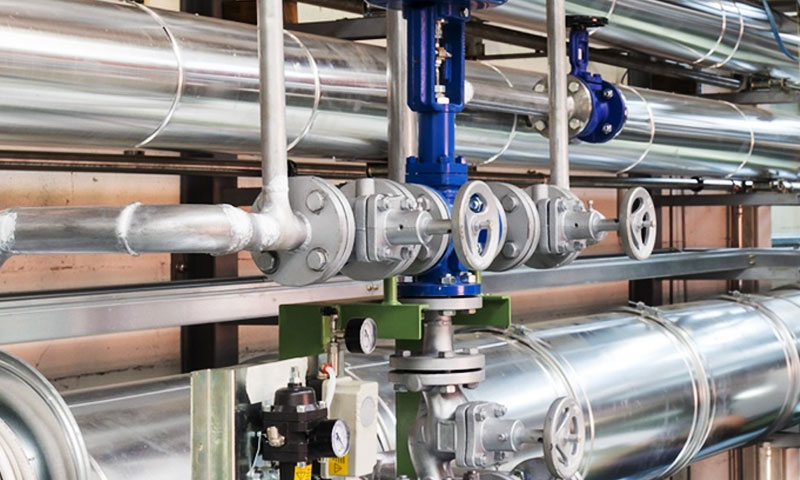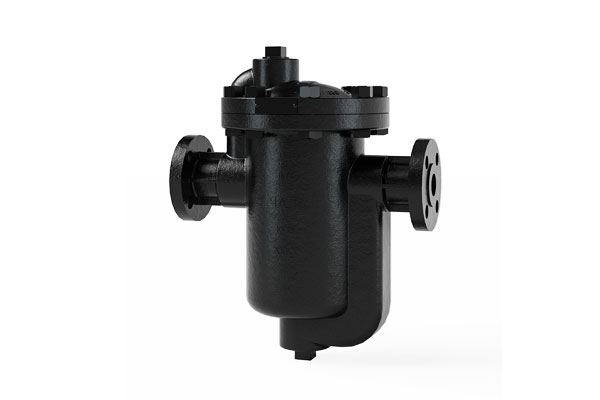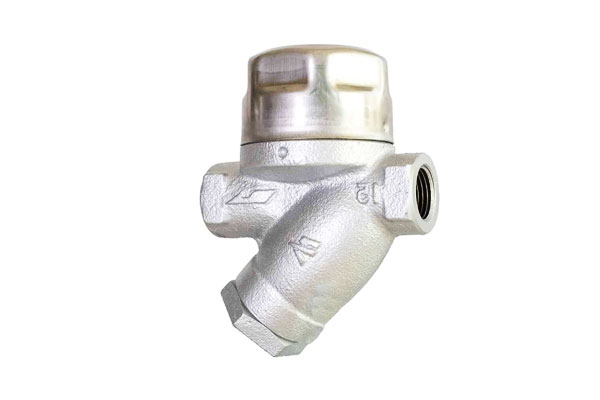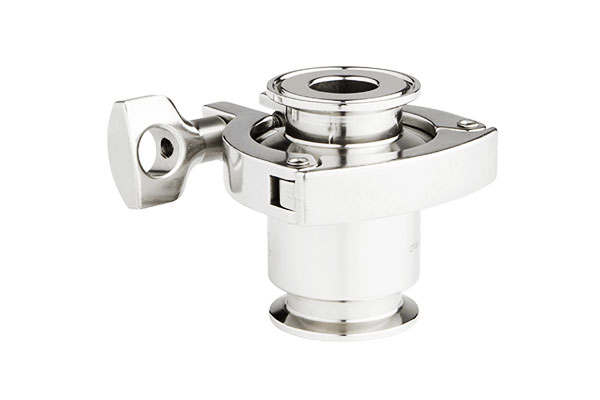1. Вступ
A Steam trap is an automatic valve used in steam systems to discharge condensate, повітря, і non-condensable gases without allowing the loss of live steam.
Acting as critical components in both industrial and commercial steam systems, they ensure thermal efficiency, system reliability, і operational safety.
Історично, steam traps were rudimentary mechanical devices, but with advancements in materials science, control technologies, і energy monitoring,
Modern traps now integrate digital diagnostics and predictive maintenance tools, making them more essential than ever in energy-conscious industrial operations.
2. How Steam Traps Work?
Steam traps are automatic клапани that serve a critical role in steam systems: they continuously differentiate and expel condensate, повітря, and non-condensable gases (NCGs) в той час retaining valuable live steam.
This selective removal is essential for preserving thermal efficiency, equipment longevity, і system reliability.
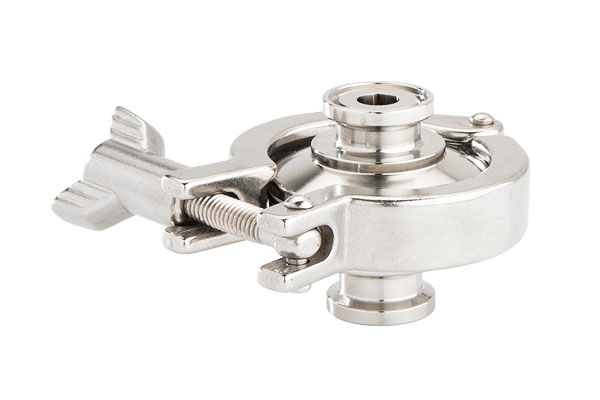
The operation of a steam trap is governed by three fundamental physical property differences between steam, condensate, and gases:
- Density difference
- Temperature difference
- Pressure/velocity difference
These physical distinctions form the basis for the trap’s actuation mechanism—whether mechanical, thermostatic, or thermodynamic.
Core Thermodynamics: Steam vs. Condensate Behavior
Understanding the differences between steam, condensate, and non-condensable gases (NCGs) is essential to comprehending how steam traps function.
Пара
Пара is a high-energy vapor with low density—ranging from approximately 0.5 до 6 кг/м³ at operating pressures between 1 до 100 бар.
Its temperature corresponds to the saturation temperature at a given pressure (Напр., 100°C at 1 бар, 184°C at 10 бар).
Steam carries a large amount of latent heat, which makes it highly efficient for thermal processes.
Condensate
Condensate forms when steam releases this latent heat during heat exchange.
It is a dense liquid—typically 900–950 kg/m³—and often cooler than the saturation temperature, known as subcooled condensate.
Under certain conditions, particularly when pressure drops rapidly, condensate can flash into secondary steam, presenting challenges for effective drainage.
Non-condensable gases (NCGs)
Air and non-condensable gases (NCGs), such as oxygen and carbon dioxide, enter the system during startup or form due to corrosion.
These gases are denser than steam but lighter than condensate, and they act as thermal insulators.
If not properly vented, they can reduce heat transfer efficiency by up to 50%, especially in heat exchangers and process vessels.
Essential Functions of a Steam Trap
To maintain steam system performance, a steam trap must reliably perform three key functions:
Efficient Condensate Removal
Accumulated condensate reduces heat transfer surface area and impairs thermal performance.
Наприклад, 25% waterlogging in a heat exchanger can cause up to a 30% drop in thermal efficiency.
Steam traps must discharge condensate immediately upon formation to avoid such losses.
Ventilation of Air and Non-Condensable Gases
During startup, steam systems are filled with air. If not vented, this air causes air locks, blocking steam flow and slowing heat-up.
Because air has very low thermal conductivity (0.026 W/m·K compared to 0.6 W/m·K for steam), it severely impacts efficiency.
An effective steam trap should vent NCGs rapidly—ideally within 10 minutes of startup.
Retention of Live Steam
Live steam contains valuable latent heat (~2,200 kJ/kg at 10 бар). Any steam loss directly translates to wasted energy.
Even a 1% steam leak in a high-pressure system can waste over 1,000 kWh/day.
Отже, a high-quality steam trap must seal tightly in the presence of steam, allowing only condensate and gases to exit.
3. Major Types of Steam Trap
Steam traps are categorized primarily based on their operating principles—how they detect and differentiate between live steam, condensate, and non-condensable gases.
The three main categories are:
- Mechanical traps — operate on density differences
- Thermodynamic traps — rely on pressure and velocity effects
- Thermostatic traps — respond to temperature changes
Mechanical Traps
Mechanical traps use the significant density difference between steam and condensate to actuate valve mechanisms.
They generally contain a float or inverted bucket that moves in response to condensate level changes.
Float & Thermostatic (F&Т) Traps
- Принцип роботи:
The core of an F&T trap is a float mechanism inside a chamber. As condensate enters, it fills the trap body, causing the float to rise.
This upward movement is mechanically linked to a valve that opens to discharge the condensate.
When the condensate level falls, the float drops, closing the valve tightly to prevent live steam loss.
Simultaneously, a thermostatic air vent on the trap’s top removes air and other non-condensable gases by sensing temperature differences: cooler air causes the vent valve to open, while hot steam closes it.
Float & Thermostatic Steam Traps - Advantages of Working Principle:
The float mechanism allows near-continuous condensate discharge at steam temperature, providing excellent thermal efficiency.
The thermostatic vent ensures fast air removal, especially critical during system startup. - Заявки:
Widely used in heat exchangers, large process vessels, and other equipment with fluctuating steam loads requiring efficient air venting and reliable condensate drainage.
Inverted Bucket Traps
- Принцип роботи:
The inverted bucket trap contains a hollow, upside-down bucket suspended inside the trap body.
When condensate fills the trap, the bucket sinks, opening the valve to discharge the condensate.
As steam enters, it fills the bucket, increasing buoyancy and causing the bucket to rise. This upward movement closes the valve, preventing steam from escaping.
The trap cycles between these two states based on the presence of steam or condensate, producing intermittent discharge.
Inverted Bucket Traps - Ключові характеристики:
The cyclic operation effectively handles large condensate loads and provides a robust mechanism less prone to wear due to fewer moving parts.
Однак, the bucket must be primed with condensate during startup for proper operation. - Заявки:
Ideal for steam mains, drip legs, and other locations with steady steam pressure where intermittent discharge is acceptable.
Thermodynamic Traps
Thermodynamic traps operate based on the dynamics of pressure and velocity differences between steam and condensate, utilizing Bernoulli’s principle and momentum changes.
Диск (Snap) Traps
- Принцип роботи:
The disc trap features a flat metal disc sitting on a valve seat. When condensate enters the trap, it lifts the disc slightly, allowing discharge.
Однак, as flash steam forms beneath the disc due to pressure drop and high velocity, it creates a high-velocity jet and reduced pressure under the disc.
This dynamic effect forces the disc down against the seat, closing the trap tightly.
When condensate cools or pressure conditions change, the disc lifts again, repeating the cycle rapidly. The rapid opening and closing (snap action) make the disc trap very responsive.
Disc Traps - Переваги:
This design is compact, rugged, and requires minimal maintenance. It can tolerate dirt and scale better than many mechanical traps and works well under superheated steam conditions. - Обмеження:
The snap action can cause noise (chatter), and disc traps may perform poorly at very low loads or pressures. - Заявки:
Commonly used on steam mains, long steam tracing lines, and outdoor installations where robustness and freeze resistance are important.
Thermostatic Traps
Thermostatic traps rely on the difference in temperature between live steam and condensate (або повітря) to open or close the valve.
They use temperature-sensitive elements that physically deform with heat.
Bimetallic Element Traps
- Принцип роботи:
These traps incorporate a bimetallic strip made from two metals with different thermal expansion coefficients.
When cooler condensate or air contacts the bimetallic element, it contracts or bends, opening the valve to discharge fluids.
As steam at saturation temperature reaches the trap, the element heats up, causing it to expand or straighten, which closes the valve to retain live steam.
This action is gradual and temperature-dependent, allowing precise control based on thermal conditions.
Bimetallic Element Steam Traps - Заявки:
Particularly suited for high-pressure steam systems and superheated steam where accurate temperature control is required, such as sterilizers and autoclaves. - Переваги & Обмеження:
Durable and capable of handling wide pressure ranges, but they may have slower response times compared to mechanical traps and can have difficulty with very low condensate loads.
Balanced Pressure (Expansion Element) Traps
- Принцип роботи:
A fluid-filled capsule or bellows expands when heated by steam, closing the discharge valve.
When condensate or air cools the capsule, it contracts, opening the valve to discharge fluids.
Because the capsule is filled with an incompressible liquid, it maintains the valve closed even if system pressure fluctuates, hence the name “balanced pressure.”
Balanced Pressure Traps - Заявки:
Used for steam tracing, sterilization, and smaller heat exchangers where smooth, quiet operation is desirable. - Переваги & Обмеження:
Excellent at venting air and non-condensable gases, but can be sensitive to water hammer and may require replacement of the capsule element after prolonged use.
Порівняльний огляд
| Аспект | Механічний (F&Т, Bucket) | Thermodynamic (Диск) | Thermostatic (Bimetallic, Expansion) |
| Control Principle | Щільність (liquid level) | Pressure/velocity (dynamic forces) | Температура (Теплове розширення) |
| Condensate Discharge | Безперервний (F&Т) or intermittent (bucket) | Rapid cycling intermittent | Temperature-dependent, gradual |
| Air Venting Capability | Відмінний (F&T with thermostatic vent) | Poor without special venting | Відмінний |
| Dirt and Scale Tolerance | Добрий (especially bucket type) | Високий (robust disc) | Помірний |
| Application Suitability | Process equipment, Теплообмінники | Steam mains, tracers, outdoor | Tracing, sterilization, sensitive equipment |
| Response to Load Changes | Fast and stable | Can be noisy, less stable at low load | Помірний, temperature lag may delay response |
| Freeze Resistance | Помірний | Високий | Від низького до помірного |
4. Selection Criteria of Steam Trap
Selecting the appropriate steam trap for a given application is critical to ensure optimal system performance, energy efficiency, and equipment longevity.
The selection process must consider multiple factors that influence trap operation, міцність, and maintenance.
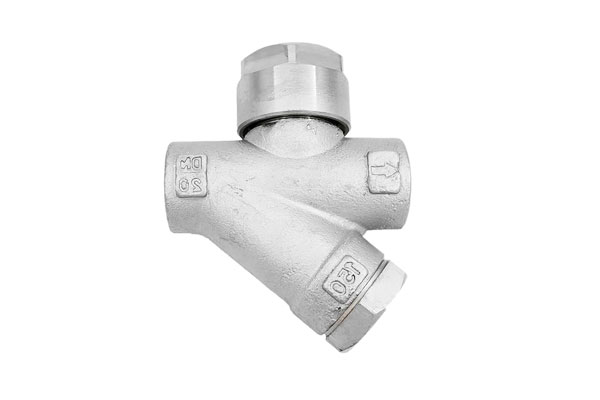
Operating Pressure and Temperature Ranges
- System Pressure:
Steam traps must be rated to handle the maximum and minimum operating pressures of the steam system.
Mechanical traps, such as float traps, perform reliably across a broad pressure range (from low to very high pressures), while thermodynamic traps are generally better suited for moderate to high pressures but may underperform at very low pressures. - Temperature Conditions:
The trap material and type must tolerate the steam saturation temperature and potential superheated steam conditions.
Thermostatic traps excel in handling superheated steam, whereas some mechanical traps may be affected by temperature extremes.
Required Condensate Capacity
- Condensate Load:
The trap must accommodate the maximum condensate flow rate, typically expressed in kg/h or lb/h.
Undersized traps risk flooding and waterlogging; oversized traps may cycle inefficiently or cause steam loss. - Load Variability:
Systems with fluctuating condensate loads benefit from traps with responsive mechanisms (Напр., float traps) to avoid continuous steam loss or condensate buildup.
Fluid Characteristics
- Corrosion and Contaminants:
Steam systems may contain corrosive substances or particulate matter from boiler blowdown or process fluids.
Traps constructed from corrosion-resistant materials (нержавіюча сталь, бронза) are preferred in such environments.
Додатково, dirt-tolerant designs (Напр., thermodynamic traps) reduce failure risks. - Flashing and Subcooling:
Condensate flashing occurs when high-temperature condensate experiences a pressure drop, producing secondary steam.
Traps must handle the increased volume of flashing steam without misfiring or leaking.
Cycle Rate and Response Time
- Cycle Frequency:
High cycle rates demand traps capable of rapid opening and closing without excessive wear (disc traps are well-suited here).
Навпаки, continuous discharge traps like float types provide smooth flow for steady loads. - Response to Air and Non-condensable Gases:
Effective venting of air and NCGs, especially during startup, reduces energy losses and protects heat transfer surfaces.
Traps with integrated thermostatic air vents or combined functions are ideal in these cases.
Material Compatibility and Corrosion Resistance
- Вибір матеріалу:
Steam traps are typically made from вуглецева сталь, нержавіюча сталь, бронза, або чавун. The choice depends on steam quality, умови експлуатації, та хімічна експозиція.
Stainless steel traps offer superior corrosion resistance and longer service life but at a higher initial cost. - Фактори навколишнього середовища:
Outdoor or freeze-prone installations require traps designed with freeze resistance or suitable insulation.
Lifecycle Cost Analysis (CAPEX vs. OPEX)
- Початкові інвестиції (CAPEX):
Some trap types have higher upfront costs (Напр., stainless steel float traps) but may offer better durability and reliability. - Operating Expenses (OPEX):
Energy losses from steam blow-through, frequent maintenance, or premature trap failure increase operating costs.
A high-efficiency trap with low failure rates can reduce OPEX significantly. - Maintenance and Accessibility:
Selection should factor in ease of inspection, очищення, and part replacement to minimize downtime and labor costs.
5. Installation Best Practices of Steam Traps
Proper installation of steam trap is critical to achieving optimal performance, довговічність, and energy efficiency.
Even the best-designed steam trap can underperform or fail prematurely if installed incorrectly.

Piping Arrangements: Horizontal vs. Vertical Runs
- Orientation Matters:
Most mechanical steam traps, such as float and inverted bucket types, require horizontal installation to ensure correct operation of floats or buckets, which depend on gravity and liquid level changes.
Installing these traps vertically or at steep angles can cause malfunction or steam loss. - Thermodynamic and thermostatic traps are less sensitive to orientation and can often be installed vertically or horizontally, offering more flexibility in tight or complex piping layouts.
- Inlet and Outlet Piping:
The inlet pipe should be adequately sized to prevent pressure drops and ensure smooth condensate flow to the trap. Avoid undersizing, which can cause condensate backup.
The outlet piping should be sized to handle the maximum expected discharge and should maintain a downward slope to facilitate condensate drainage and avoid water hammer.
Use of Inlet and Outlet Accessories
- Strainers:
Install strainers or dirt legs upstream of the steam trap to protect the internal valve from dirt, масштаб, and debris.
Clean or replace strainers regularly to prevent clogging and ensure trap longevity. - Isolation Valves:
Incorporate isolation valves on both the inlet and outlet sides of the trap. This allows easy removal and maintenance without shutting down the entire steam system. - Drip Legs:
Place drip legs or separators ahead of traps to collect large volumes of condensate or slugs of water, preventing trap damage from water hammer.
Proper Pitch and Positioning
- Trap Position Relative to Equipment:
Install traps as close as possible to the equipment outlet or drip point to prevent condensate accumulation, which can cause waterlogging and reduce heat transfer efficiency. - Piping Slope:
Maintain a minimum pipe pitch of 1:100 (1% slope) toward the trap to ensure condensate flows freely by gravity.
Insufficient pitch leads to condensate pooling in steam lines and may result in water hammer. - Trap Discharge Position:
The trap outlet pipe should also be sloped downward and routed to the condensate return system or drain.
Avoid long horizontal runs after the trap outlet to prevent backpressure buildup.
Ensuring Accessibility for Inspection and Maintenance
- Accessible Location:
Steam traps should be installed where they are easily accessible for inspection, тестування, and maintenance without requiring extensive system shutdowns or personnel risk. - Space for Tools:
Provide sufficient clearance around the trap to allow removal, заміна, or cleaning of components. - Labeling and Documentation:
Clearly label all steam traps with identification numbers, service dates, and trap type.
Maintain updated schematics and maintenance logs to streamline troubleshooting and record keeping.
Additional Considerations
- Thermal Insulation:
Insulate steam traps and associated piping to minimize heat loss and prevent freezing in cold environments. Use insulation materials suitable for the operating temperature and conditions. - Condensate Return System Compatibility:
Ensure the trap outlet discharges into a condensate return system or suitable drainage with adequate capacity and pressure rating. - Water Hammer Prevention:
Proper sizing, pitch, and trap selection are vital to mitigate water hammer risks. Water hammer can severely damage traps and piping, causing premature failure.
6. Тестування, Commissioning & Технічне обслуговування
Ensuring steam traps operate efficiently and reliably throughout their service life requires systematic testing, careful commissioning, and regular maintenance.
Proper procedures minimize steam loss, prevent equipment damage, and optimize energy consumption.
Pre-Startup Testing
- Bench Testing:
Before installation, steam traps should undergo bench testing according to manufacturer specifications.
This confirms the trap’s operational integrity, including valve seating and float or disc movement.
Bench tests simulate operating conditions and help detect manufacturing defects or damage incurred during shipment. - Leak and Pressure Tests:
After installation, perform pressure tests to verify there are no leaks in the trap body, connections, or associated piping. Ensuring tight seals prevents steam loss and system inefficiencies. - Functional Verification:
Verify correct trap orientation and ensure inlet/outlet valves and strainers are properly installed and open.
Online Diagnostic Techniques
- Ультразвукове тестування:
Ultrasonic devices detect the high-frequency sound generated by steam or condensate flowing through the trap.
By analyzing flow patterns, technicians can determine if the trap is discharging condensate properly or if it is leaking steam. - Thermal Imaging (Infrared Thermography):
Thermal cameras identify temperature differences across the trap.
A functioning trap typically shows a temperature gradient between the inlet (hot condensate/steam) and outlet (discharged condensate).
Abnormal thermal profiles may indicate blockages, leaks, or failed components. - Differential Pressure Measurement:
Measuring pressure drop across the trap helps assess flow characteristics and trap condition. Excessive pressure drops may signal clogging or valve damage.
Common Maintenance Tasks
- Cleaning Strainers and Dirt Legs:
Regularly inspect and clean strainers to remove debris that can block the trap or cause wear. Neglecting strainers is a leading cause of trap failure. - Seat and Valve Inspection/Replacement:
Trap seats and valves wear over time due to thermal cycling and mechanical stress.
Scheduled inspections and timely replacement maintain tight sealing and prevent steam blow-through. - Cycle Testing:
For mechanical traps, monitor the opening and closing cycles to detect issues like chattering or delayed response. Adjust or replace traps that do not cycle properly.
Predictive Maintenance and Condition Monitoring
- Automated Monitoring Systems:
Advanced steam systems incorporate sensors and smart monitoring devices to provide real-time data on trap performance.
These systems alert operators to anomalies such as continuous steam loss or blockage, enabling timely intervention. - Trend Analysis:
Recording trap performance over time helps predict failures before catastrophic breakdowns. Data-driven maintenance reduces unplanned downtime and optimizes resource allocation.
Commissioning Best Practices
- System Warm-Up:
During initial startup, ensure traps vent air and non-condensable gases effectively to prevent air binding and achieve design operating temperatures quickly. - Leak Checks Post-Commissioning:
After warm-up, re-inspect traps for steam leaks or condensate backup. Fine-tune trap operation settings as necessary. - Документація:
Maintain detailed records of commissioning tests, trap types, locations, and maintenance schedules. This supports systematic troubleshooting and lifecycle management.
7. Common Steam Trap Failure Modes and Troubleshooting
| Failure Mode | Primary Causes | Consequences | Усунення несправностей / Remedies |
| Waterlogging / Flooding | – Blockage (масштаб, debris)- Undersized trap- Mechanical failure (stuck float/bucket) | – Reduced heat transfer efficiency- Risk of water hammer- Increased energy consumption | – Clean strainers- Check sizing- Repair/replace failed components |
| Continuous Blow-Through (Steam Loss) | – Worn valve seat- Dirt on valve- Oversized trap | – High energy loss- Pressure drop- Increased utility costs | – Use ultrasonic or IR diagnostics- Replace seat/valve- Use properly sized trap |
| Blockage from Debris | – Poor water treatment- No or clogged strainer- Particulate-laden condensate | – Trap failure- Equipment flooding- Frequent shutdowns | – Improve water treatment- Clean or install strainers- Use corrosion-resistant materials |
| Балаканина / Cycling Instability | – High ΔP (pressure differential)- Improper sizing- Mechanical wear | – Accelerated wear- Noise- Steam/condensate imbalance | – Resize or change trap type- Add pressure regulation- Inspect for mechanical defects |
| Air Binding / Startup Delay | – Trap not venting air/NCGs- Lack of thermostatic element | – Slow warm-up- Cold spots in process- System inefficiency | – Use air-venting trap types (Напр., F&Т)- Check and test startup venting |
8. Applications of Steam Trap
Steam traps play a crucial role in a wide range of industries where steam is used for heating, обробка, Генерація живлення, or sterilization.
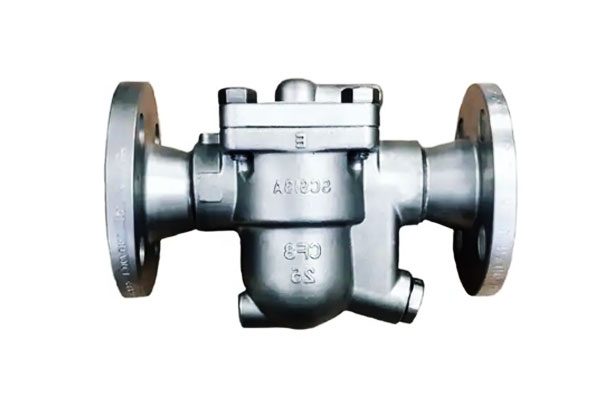
General Process Industry
- Теплообмінники
- Steam jackets and reactors
- Process vessels
Їжа & Beverage Industry
- Sterilizers, cookers, autoclaves
- CIP (Clean-in-Place) системи
- Steam tracing of product pipelines
Фармацевтичний & Biotech
- Pure steam sterilization systems
- Clean steam distribution
- Bioreactor heating
Нафта & Газовий / Нафтохімічний
- Reboilers
- Condensate recovery systems
- Line tracing in hazardous zones
Генерація живлення (Теплові & Nuclear)
- Turbine drain systems
- Feedwater heaters
- Deaerators
Textile & Paper Industry
- Dryers and calenders
- Steam cylinders and pressing machines
- Steam-heated rolls
HVAC and Building Services
- Radiators and convectors
- Humidifiers
- Air handling units
9. Advantages and Disadvantages of Steam Trap
Переваги
Енергоефективність
By discharging only condensate and retaining live steam, steam traps minimize energy waste, reduce fuel consumption, and improve thermal efficiency in heating processes.
Process Stability
Steam traps maintain optimal heat transfer by preventing condensate accumulation, ensuring consistent temperatures in heat exchangers, реактори, and other steam-driven equipment.
System Protection
Effective condensate removal reduces the risk of water hammer, корозія, and thermal stress, extending the life of piping, клапани, and process equipment.
Автоматична робота
Steam trap respond passively to temperature, тиск, or density changes—requiring no external power or manual intervention—enabling fully automated condensate control.
Improved Start-Up Efficiency
Traps with air-venting capability accelerate system warm-up by removing air and non-condensable gases that hinder steam flow and delay temperature rise.
Універсальність різних програм
Available in mechanical, thermodynamic, and thermostatic types, steam traps are suitable for a wide range of pressures (vacuum to 600+ бар), loads, and system layouts.
Facilitates Condensate Recovery
By separating clean condensate from steam, traps enable recycling through condensate recovery systems, saving water, хімічні речовини, and treatment energy.
Недоліки
Susceptibility to Failure
Steam trap can fail open (causing live steam loss) or fail closed (leading to flooding) due to erosion, масштаб, корозія, or mechanical fatigue over time.
Вимоги до технічного обслуговування
Routine inspection, тестування, and cleaning are necessary to ensure performance. Neglected traps may leak unnoticed, reducing energy efficiency and safety.
Application Sensitivity
Improper sizing or incorrect trap selection can cause operational issues, such as underdrainage, steam locking, or excessive cycling under variable loads.
Installation Complexity
Steam traps require specific piping configurations (Напр., correct pitch, elevation, dirt legs, isolation valves) to function reliably and minimize wear.
Limited Cross-Compatibility
Not all trap types are suitable for all applications. Наприклад, disc traps may chatter at low pressure, while float traps may struggle in vertical installations.
Air Venting Limitations (Certain Types)
Some types (Напр., inverted bucket, диск) are less effective at venting air and non-condensable gases, leading to longer startup times or heat transfer inefficiency.
10. Порівняння з іншими клапанами
Steam trap is often misunderstood or miscompared with conventional valves.
While all control fluid flow, steam traps are unique in function, actuation, and response behavior, tailored specifically for steam-condensate separation and energy conservation.
Functional Comparison Table
| Означати / Функціонування | Steam Trap | Глобусна клапан | Контролювати клапан | Pressure Reducing Valve (PRV) |
| Primary Purpose | Automatically discharge condensate without losing steam | Manually or automatically throttle flow | Prevent backflow | Maintain constant downstream pressure |
| Media Separation | Так (differentiates steam, condensate, air/NCGs) | Ні | Ні | Ні |
| Тип роботи | Автоматичний, self-actuating based on temperature/pressure | Manual or actuator-based | Пасивний (flow-actuated) | Автоматичний (pilot or spring-controlled) |
| Condensate Discharge | Continuous or intermittent based on type | Не застосовується | Не застосовується | Не застосовується |
| Steam Retention | Yes – key function | Ні | Ні | Ні |
| Air Venting Capability | Так (in thermostatic/mechanical types) | Ні | Ні | Ні |
| Failure Impact | May cause energy loss or flooding | May cause throttling issues | Allows reverse flow | Pressure instability |
| Maintenance Needs | Periodic testing, огляд, strainer cleaning | Seat wear, actuator service | Occasional cleaning | Spring/diaphragm replacement |
| Ключові програми | Steam systems, Теплообмінники, tracing, drip legs | Isolation and throttling | Flow protection in pipelines | Контроль процесів, розподіл пари |
11. Висновок
A Steam trap is indispensable in any steam-based thermal system. Proper selection, installation, and maintenance dramatically enhance ефективність, безпека, і return on investment.
With modern traps offering digital diagnostics і remote monitoring, they have evolved from passive mechanical devices to strategic energy assets.
Це: Високоточні рішення для кастингу кастингу для вимогливих додатків
Це є спеціалізованим постачальником послуг з кастингу точності, Надання високопродуктивних компонентів для галузей, які потребують надійності, цілісність тиску, і розмірна точність.
Від сирої кастингу до повністю оброблених тіл клапанів та зборів, Це Пропонує рішення щодо кінця до кінця, розроблених для відповідності суворим глобальним стандартам.
Наш досвід кастингу клапана включає:
Інвестиційне кастинг для тіл клапана & Обрізати
Використання технології втраченого воску для виробництва складних внутрішніх геометрія та компонентів з щільно-толерантності з винятковими оздобленнями поверхні.
Пісочний кастинг & Кастинг цвілі з оболонки
Ідеально підходить для середніх та великих тіл клапанів, фланці, і капелюшки-пропонуючи економічно вигідне рішення для міцних промислових додатків, включаючи олію & Генерування газу та електроенергії.
Точна обробка для пристосування клапана & Цілісність ущільнення
Обробка ЧПУ місця, нитки, А герметичні обличчя забезпечує кожну складову частину, що відповідає вимогам щодо вимірних та герметичних продуктивності.
Діапазон матеріалу для критичних застосувань
Від нержавіючих сталей (CF8/CF8M/CF3/CF3M), латунь, пластичне залізо, до дуплексних та високолегованих матеріалів, Це приладдя клапанів, побудовані для виконання в корозійній, високий тиск, або високотемпературні середовища.
Whether you require custom-engineered steam traps, plug valves, Глобусна клапани, клапани воріт, або велике обсяг виробництва промислового клапанів, Це Чи є ваш надійний партнер для точності, міцність, та забезпечення якості.
Поширені запитання
What is the difference between a float trap and a thermostatic trap?
Float traps (механічний) use buoyancy to drain condensate and work best for high loads.
Thermostatic traps use temperature sensitivity to vent air and condensate, ideal for low-pressure or temperature-critical systems.
How often should steam traps be inspected?
Monthly visual checks, quarterly ultrasonic/thermal testing, and annual disassembly. High-criticality systems (Напр., харчова обробка) should be inspect monthly.
Can steam traps handle flash steam?
Так, thermodynamic (диск) traps are designed for flash steam, using its velocity to actuate valves. Mechanical traps also handle it but may require larger sizing.
What’s the typical lifespan of a steam trap?
5–10 years for mechanical traps (F&Т, inverted bucket); 3–7 years for thermostatic/disc traps. Proper maintenance extends life by 30–50%.
How do I size a steam trap for my system?
Calculate condensate load (kg/h) using heat transfer equations (Напр., 1 kg steam = 2,200 kJ heat; a 100 kW heater produces ~160 kg/h condensate).
Select a trap with 1.5× this capacity to account for surges.
What is a Steam Trap?
A steam trap is a specialized automatic valve used in steam systems to efficiently remove condensate (water formed when steam cools) and non-condensable gases like air, while preventing the loss of valuable live steam.
By distinguishing between steam and condensate based on differences in temperature, щільність, or velocity, steam traps ensure optimal heat transfer, improve energy efficiency, and protect equipment from water damage and corrosion.

